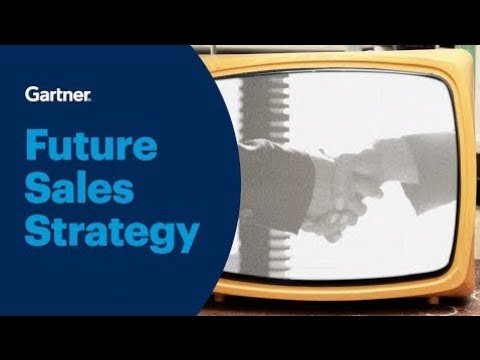Regarding the identical topic:
- The Evolution of Sales Enablement
- Impact of AI and Machine Learning
- Emerging Trends in Customer Journey and Buyer Behavior
- From Sales Enablement to Revenue Enablement
- The Role of Emerging Technologies
- Strategies for Enhancing Productivity and Customer Satisfaction
- Importance of a Data-Driven Strategy
- ROI and Growth Projections
The Evolution of Sales Enablement
Sales enablement has traditionally focused on providing sales teams with the necessary tools, content, and information to enhance their sales performances. However, the scope of sales enablement has broadened significantly, transitioning from basic sales support to a more comprehensive revenue enablement approach. This shift reflects a deeper integration of sales, marketing, and customer service functions, aimed at driving holistic business growth.
Historically, sales enablement was about equipping salespeople with scripts and brochures. Today, it encompasses a wide array of digital tools and analytics designed to optimize the entire sales process. The integration of AI and machine learning technologies has further expanded the capabilities of sales enablement platforms, providing real-time insights and predictive analytics to fine-tune sales strategies.

Impact of AI and Machine Learning
The infusion of AI and machine learning in sales enablement tools has revolutionized how sales teams engage with prospects and customers. AI algorithms analyze vast amounts of data to identify patterns and predict buyer behaviors, enabling sales teams to tailor their approaches to individual customer needs and preferences.
 Mastering Sales Enablement: Your Ultimate Career Guide
Mastering Sales Enablement: Your Ultimate Career GuideAI-powered chatbots and virtual assistants have become commonplace in handling initial customer inquiries, freeing up human sales representatives to focus on more complex negotiations. Moreover, AI-driven analytics help sales teams prioritize leads based on their likelihood to convert, thereby optimizing the sales funnel and improving conversion rates.
Emerging Trends in Customer Journey and Buyer Behavior
The modern buyer is more informed and empowered than ever before, often conducting extensive research before engaging with sales representatives. This shift has necessitated a change in sales tactics, with a greater emphasis on nurturing leads through personalized, content-driven experiences.
Sales enablement now must account for a multi-touchpoint customer journey that spans various channels, both online and offline. Understanding and mapping this journey is crucial for delivering timely and relevant content that addresses the specific needs and pain points of potential buyers at each stage.
From Sales Enablement to Revenue Enablement
The concept of revenue enablement extends beyond the traditional boundaries of sales enablement by incorporating all customer-facing roles within its purview. This holistic approach ensures that everyone from sales to customer service and support is aligned and equipped to contribute to revenue generation.
 Boost Your Sales Success: Unveiling the Power of Sales Enablement
Boost Your Sales Success: Unveiling the Power of Sales EnablementRevenue enablement focuses on creating a seamless customer experience that does not differentiate between sales, marketing, and customer support, but rather integrates these functions to collectively drive customer satisfaction and loyalty.
The Role of Emerging Technologies
New technologies continue to emerge, reshaping the sales enablement landscape. Blockchain, for instance, is starting to play a role in secure and transparent contract management and transaction processes. Augmented reality (AR) and virtual reality (VR) are being used for immersive sales training and product demonstrations, providing a richer, more engaging buyer experience.
Furthermore, the Internet of Things (IoT) provides real-time data that sales teams can use to monitor product performance and customer usage patterns, offering opportunities for timely upsells and service enhancements.
Strategies for Enhancing Productivity and Customer Satisfaction
Enhancing sales team productivity involves the strategic use of technology to automate routine tasks and free up time for high-value activities. For example, CRM systems integrated with AI can automate data entry and lead scoring, while predictive analytics can suggest the next best actions for sales reps to take.
 Crafting a High-Performing Sales Team Structure for Sales Success
Crafting a High-Performing Sales Team Structure for Sales SuccessImproving customer satisfaction in the sales process involves personalizing interactions and ensuring consistent communication. Sales enablement tools that provide sales reps with access to comprehensive customer histories and preferences enable them to engage in more meaningful, productive conversations.
Importance of a Data-Driven Strategy
A robust data strategy is fundamental to effective sales enablement. Collecting and analyzing data from various touchpoints throughout the customer journey allows organizations to gain insights into customer behaviors and preferences, which can be used to refine sales strategies and improve engagement.
Tools that leverage big data and analytics help sales teams to understand market trends, track competitor activities, and anticipate changes in customer demand, enabling them to act proactively rather than reactively.
ROI and Growth Projections
The return on investment (ROI) from advanced sales enablement tools can be significant. Organizations that successfully implement and utilize these tools report shorter sales cycles, higher win rates, and increased revenue. As businesses continue to invest in sales enablement technologies, the focus will increasingly shift towards measuring and optimizing these investments to maximize ROI.
 Sales Enablement Reporting: Best Practices for Success
Sales Enablement Reporting: Best Practices for SuccessFuture growth in sales enablement will likely be driven by further advancements in AI and machine learning, as well as the continued integration of cross-functional data to provide a unified view of the customer across all touchpoints.
If you want to know other articles similar to Future of Sales Enablement: Trends, Technologies, Strategies you can visit the Sales enablement category.

